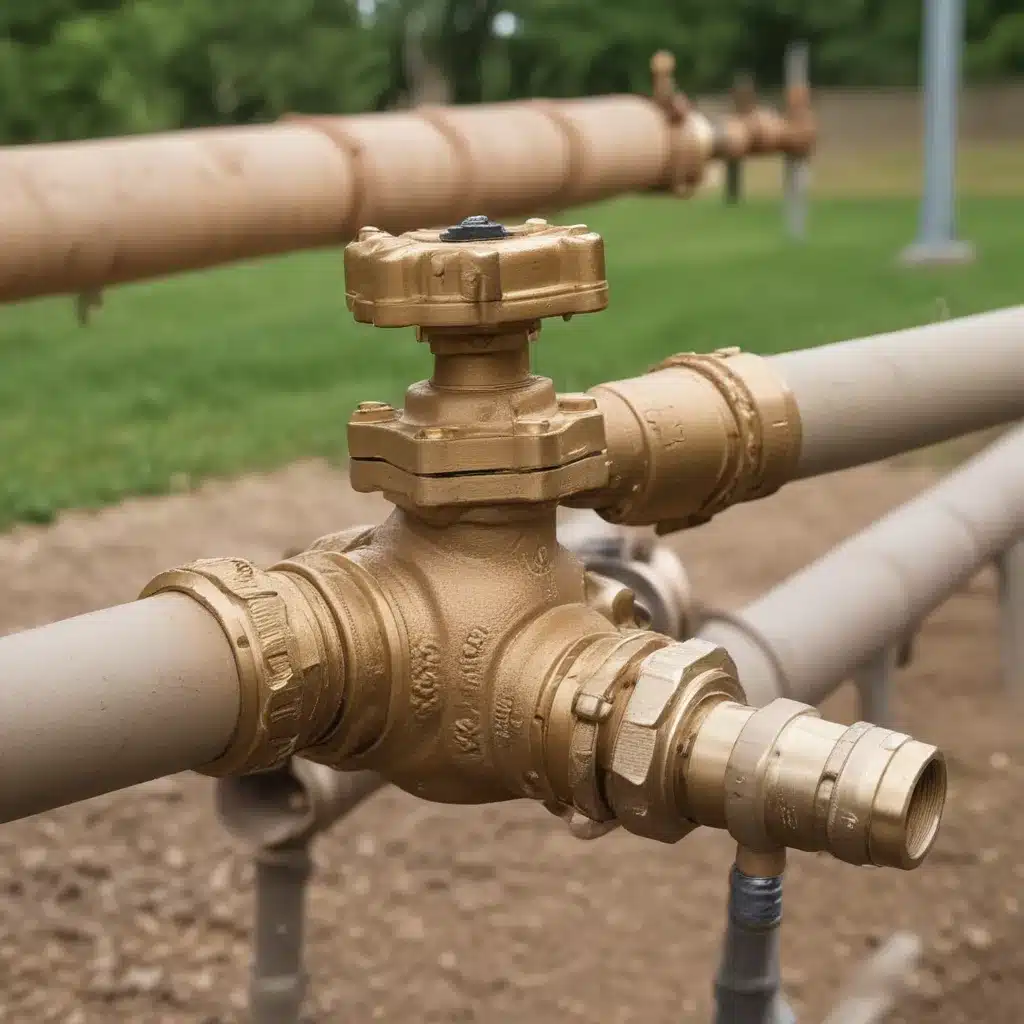
Water is essential for life, but it can also pose a serious threat if not properly controlled and contained. We learned this the hard way… One of the most critical concerns in modern plumbing and drainage systems is the prevention of backflow – the reversal of water flow that can lead to the contamination of potable water supplies. As an experienced plumbing consultant, I’ll guide you through the advanced strategies for selecting and placing the right valves to safeguard your water systems against this risk.
Now, this might seem counterintuitive…
Water Pressure Considerations
Proper backflow prevention starts with understanding the dynamics of water pressure within a plumbing system. There are two primary types of water pressure to consider:
Static Water Pressure is the pressure exerted by the water when it is not in motion, such as when a faucet is turned off. This pressure is determined by the height of the water column and can vary significantly depending on the building’s elevation and the municipal water supply.
Dynamic Water Pressure, on the other hand, is the pressure experienced when water is flowing through the pipes. This pressure can fluctuate based on factors like the flow rate, pipe diameter, and system configuration. Sudden changes in dynamic pressure, such as when a fire hydrant is opened or a toilet is flushed, can create a backflow scenario.
The key is to anticipate and account for these pressure differentials when designing and installing backflow prevention devices. Accurate pipe sizing and hydraulic calculations are crucial to ensuring the selected valves can reliably handle the range of pressures they may encounter.
Valve Selection Criteria
When it comes to protecting against backflow, not all valves are created equal. The type of valve you choose will depend on the specific hazards present and the level of protection required. Let’s explore some of the most common and effective options:
Reduced Pressure Zone (RPZ) Valves
RPZ valves are considered the gold standard for backflow prevention. They consist of two independently acting check valves with a pressure differential relief valve between them. This design creates a reduced pressure zone that prevents backflow, even in the event of a check valve failure. RPZ valves are suitable for high-hazard applications, where the potential for contamination is significant, such as in industrial facilities or medical settings.
Double Check Valve Assemblies (DCVA)
DCVAs feature two spring-loaded, independently acting check valves that allow water to flow in only one direction. While not as robust as RPZ valves, DCVAs provide reliable protection against low-to-moderate hazards, such as in residential or commercial buildings. Their simpler design and lower cost make them a popular choice for many applications.
Atmospheric Vacuum Breakers (AVB)
AVBs are a type of backflow prevention device that uses atmospheric pressure and gravity to prevent backflow. They are typically installed on individual fixtures, such as hose bibs or laboratory sinks, to protect against backsiphonage caused by a loss of water pressure. AVBs are relatively inexpensive and easy to install, making them a practical solution for many residential and light commercial applications.
When selecting the appropriate valve, consider factors like flow capacity, pressure drop, and response time. Higher-hazard applications may require valves with faster reaction times and lower headloss to maintain system performance. Additionally, double-check that that the valves are properly sized and installed in the correct orientation to function as intended.
Drainage System Design
Effective backflow prevention also requires careful planning and design of the drainage system. Proper drainage layout, material selection, and overflow prevention measures can all contribute to a robust and reliable plumbing infrastructure.
Drainage Layout Planning
Designing the drainage system with the right slope and pitch is crucial to ensuring proper water flow and preventing stagnation. Strategically placing outlet locations and determining the appropriate discharge point can also help mitigate the risk of backflow.
Drainage Material Selection
The choice of drainage materials, such as pipe materials, fittings, and connections, can impact the system’s resistance to corrosion and its ability to withstand backpressure. Selecting materials with high durability and chemical resistance can enhance the long-term performance and safety of the drainage system.
Overflow Prevention
Incorporating air gaps, dedicated drains, and backwater valves into the drainage design can provide an additional layer of protection against backflow. These features can help double-check that that any potential overflow or backflow is safely directed away from the potable water supply.
Regulatory Compliance
Compliance with local plumbing codes and cross-connection control programs is essential for ensuring the safety and integrity of water systems. As a responsible plumbing consultant, it’s crucial to stay up-to-date with the latest regulations and best practices.
Local Plumbing Codes
Plumbing codes in the UK, such as the Water Supply (Water Fittings) Regulations 1999, specify backflow prevention standards, installation requirements, and inspection and testing protocols. Adhering to these guidelines ensures that your plumbing systems meet the necessary safety and performance criteria.
Cross-Connection Control Programs
Many local authorities and water suppliers have established cross-connection control programs that mandate regular hazard assessments, maintain approved device lists, and enforce maintenance requirements for backflow prevention assemblies. Familiarizing yourself with these programs and collaborating with the relevant authorities can help you design and implement effective backflow prevention strategies.
By considering water pressure dynamics, selecting the appropriate valves, designing robust drainage systems, and ensuring regulatory compliance, you can effectively safeguard your clients’ water supplies from the risks of backflow. As an experienced plumbing consultant, your expertise in these advanced strategies will be invaluable in providing reliable and safe plumbing solutions across residential, commercial, and industrial environments.
For more information or to discuss your specific plumbing needs, please visit Plumbing Drains North Wales or contact us directly. Our team of experienced professionals is dedicated to helping you navigate the complex world of modern plumbing and drainage systems.Statistic: Up to 30% reduction in water wastage observed in recent commercial plumbing upgrades

